
How to Use MB102 Breadboard Power Supply Module 3.3V/5V: Examples, Pinouts, and Specs
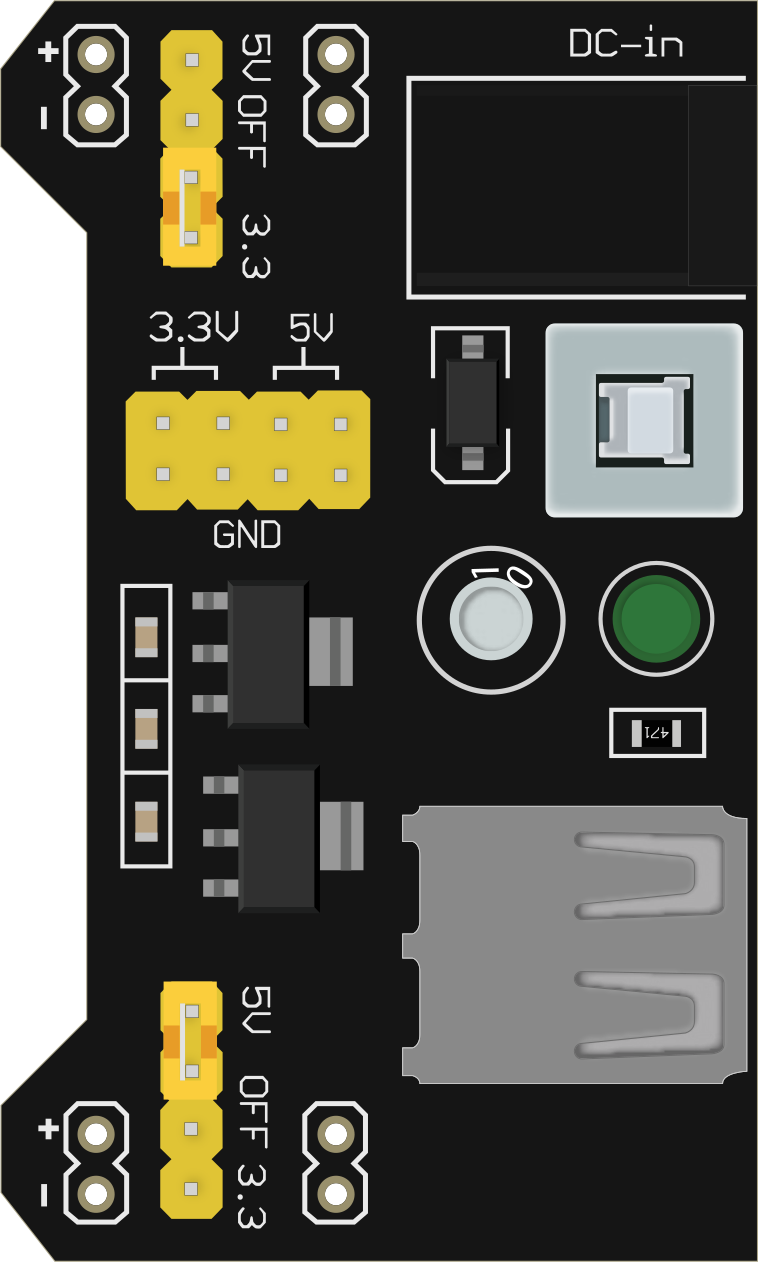
 Design with MB102 Breadboard Power Supply Module 3.3V/5V in Cirkit Designer
Design with MB102 Breadboard Power Supply Module 3.3V/5V in Cirkit DesignerIntroduction
The MB102 Breadboard Power Supply Module by CorpCo (Part ID: Uno) is a compact and versatile power supply solution designed specifically for breadboard-based prototyping. It provides stable output voltages of 3.3V and 5V, making it ideal for powering a wide range of electronic components and projects. This module is easy to use, fits snugly onto standard breadboards, and eliminates the need for bulky external power supplies.
Explore Projects Built with MB102 Breadboard Power Supply Module 3.3V/5V
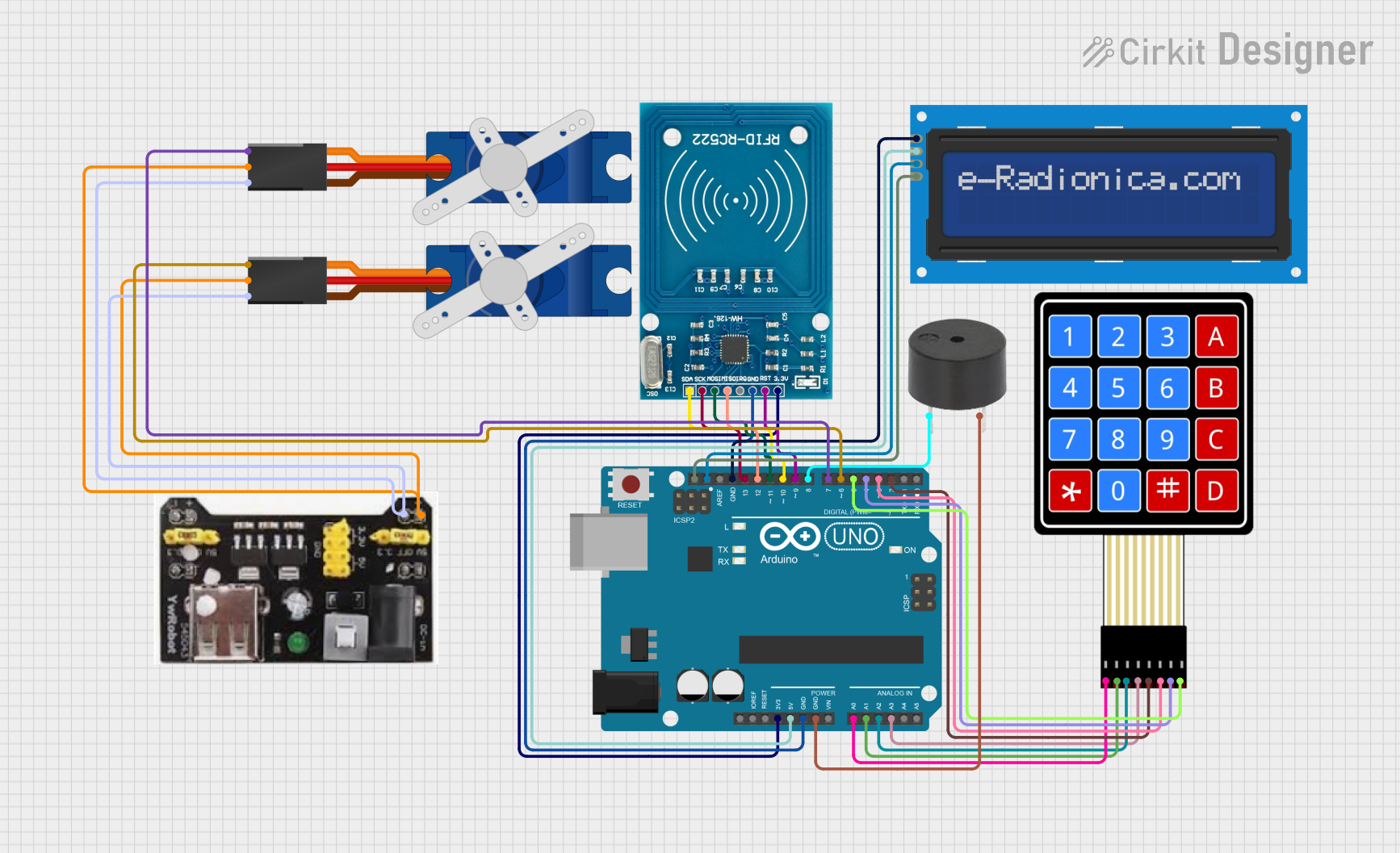
 Open Project in Cirkit Designer
Open Project in Cirkit Designer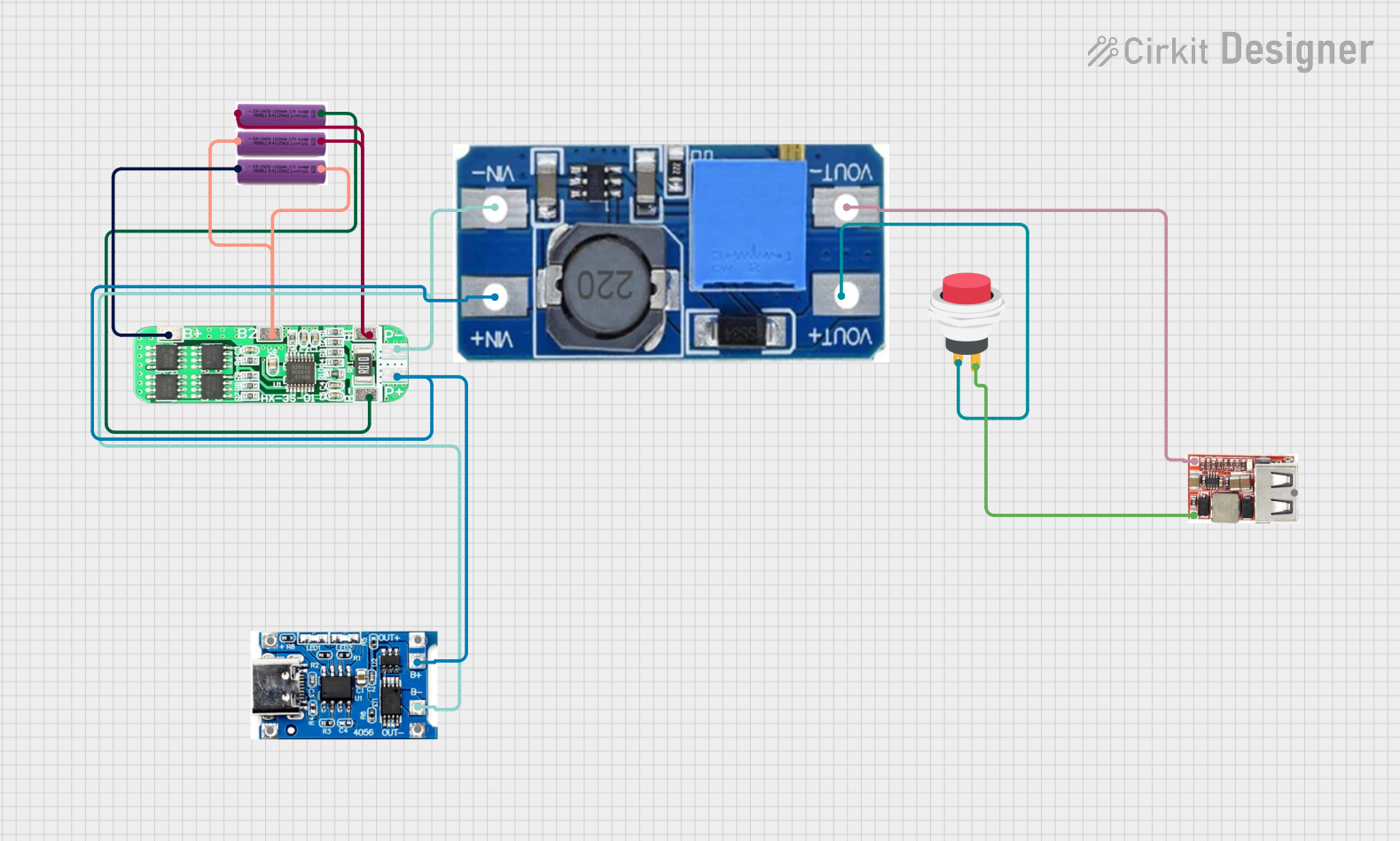
 Open Project in Cirkit Designer
Open Project in Cirkit Designer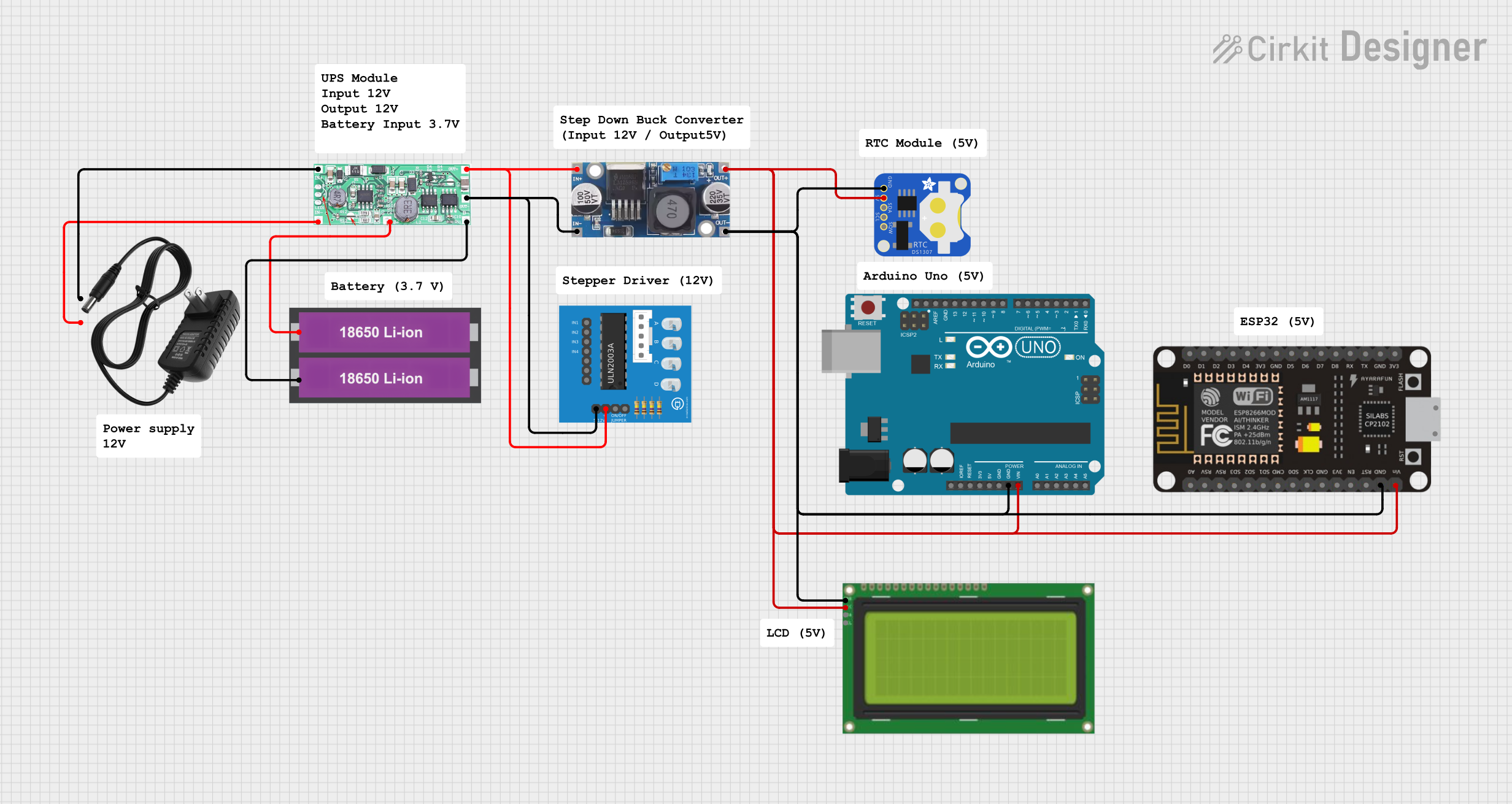
 Open Project in Cirkit Designer
Open Project in Cirkit Designer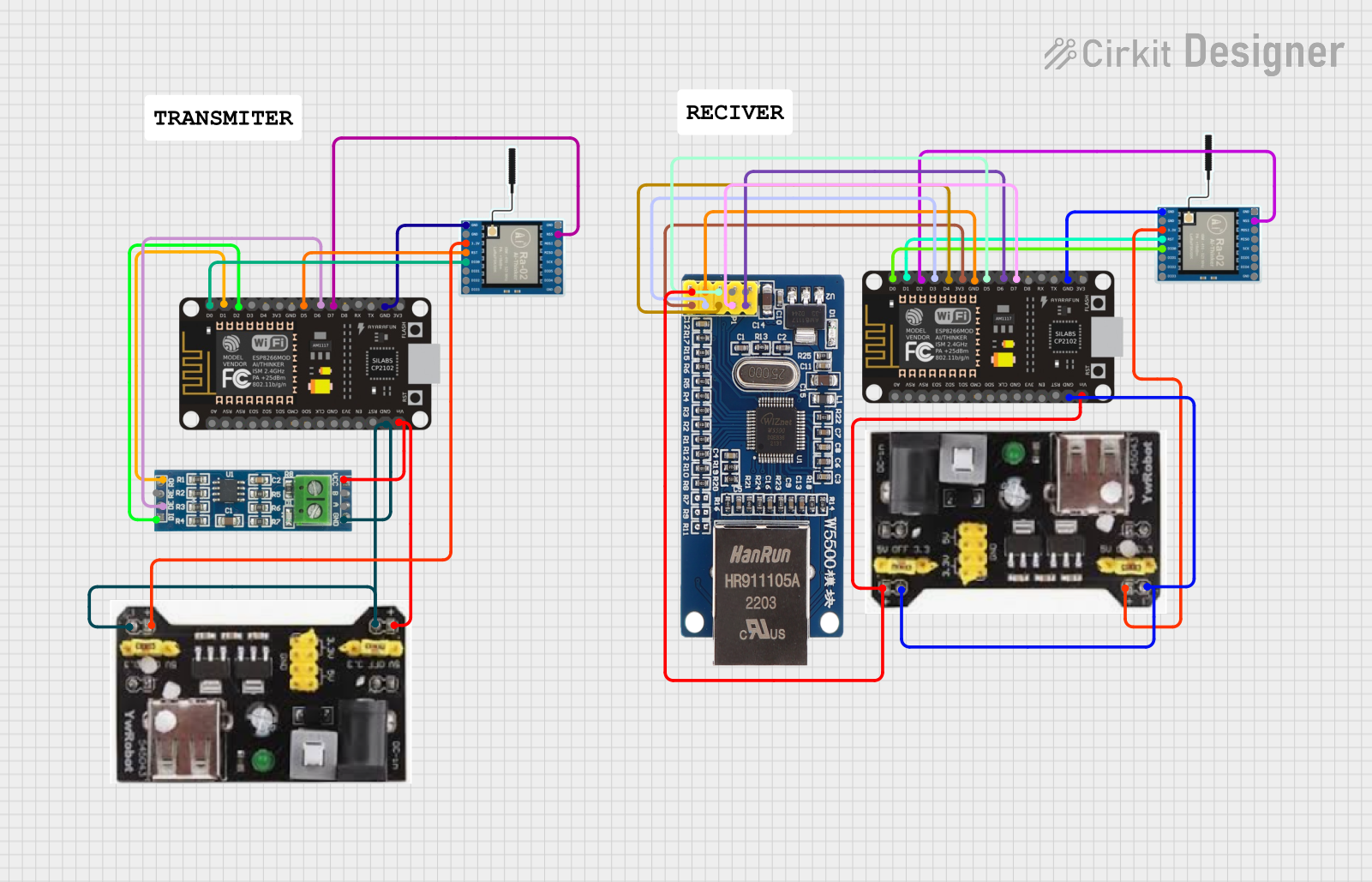
 Open Project in Cirkit Designer
Open Project in Cirkit DesignerExplore Projects Built with MB102 Breadboard Power Supply Module 3.3V/5V

 Open Project in Cirkit Designer
Open Project in Cirkit Designer
 Open Project in Cirkit Designer
Open Project in Cirkit Designer
 Open Project in Cirkit Designer
Open Project in Cirkit Designer
 Open Project in Cirkit Designer
Open Project in Cirkit DesignerCommon Applications and Use Cases
- Powering microcontrollers (e.g., Arduino, ESP32, Raspberry Pi Pico)
- Supplying power to sensors, LEDs, and other low-power components
- Prototyping and testing circuits on breadboards
- Educational and hobbyist electronics projects
Technical Specifications
The following table outlines the key technical details of the MB102 Breadboard Power Supply Module:
| Parameter | Specification |
|---|---|
| Input Voltage | 6.5V to 12V (via DC barrel jack) |
| Alternate Input | 5V (via USB Type-A port) |
| Output Voltage Options | 3.3V and 5V |
| Maximum Output Current | 700mA (depending on input source) |
| Dimensions | 53mm x 35mm x 20mm |
| Compatibility | Standard 830-point breadboards |
Pin Configuration and Descriptions
The MB102 module has several key pins and connectors. The table below describes their functions:
| Pin/Connector | Description |
|---|---|
| DC Barrel Jack | Input for 6.5V to 12V DC power supply. |
| USB Type-A Port | Alternate input for 5V power supply. |
| Power Switch | Toggles the module ON or OFF. |
| Voltage Selector Jumper | Selects the output voltage (3.3V or 5V) for each power rail. |
| Breadboard Pins | Outputs 3.3V or 5V to the breadboard's power rails (left and right sides). |
| GND Pins | Provides ground connections to the breadboard's ground rails. |
Usage Instructions
How to Use the MB102 Power Supply Module in a Circuit
Connect the Module to a Breadboard:
- Align the module's pins with the power rails of a standard 830-point breadboard.
- Gently press the module into place to ensure a secure connection.
Provide Input Power:
- Use a DC power adapter (6.5V to 12V) and connect it to the DC barrel jack.
- Alternatively, connect a USB power source (5V) to the USB Type-A port.
Set the Output Voltage:
- Use the voltage selector jumpers to choose between 3.3V and 5V for each power rail.
- Ensure the jumpers are securely placed in the desired position.
Power On the Module:
- Slide the power switch to the ON position.
- Verify the power indicator LED lights up, confirming the module is operational.
Connect Components:
- Use the breadboard's power and ground rails to supply power to your circuit components.
Important Considerations and Best Practices
- Input Voltage Range: Ensure the input voltage is within the specified range (6.5V to 12V). Exceeding this range may damage the module.
- Current Limitations: The module can supply a maximum current of 700mA. Avoid overloading the module to prevent overheating or failure.
- Voltage Selection: Double-check the voltage selector jumpers before connecting sensitive components to avoid accidental damage.
- Heat Dissipation: If the module becomes warm during operation, ensure adequate ventilation to prevent overheating.
Example: Using the MB102 with an Arduino UNO
Below is an example of how to power an Arduino UNO using the MB102 module:
- Connect the MB102 module to the breadboard.
- Set the voltage selector jumper to 5V.
- Use jumper wires to connect the breadboard's 5V and GND rails to the Arduino UNO's 5V and GND pins, respectively.
Sample Arduino Code
// Example: Blink an LED using Arduino UNO powered by MB102 module
// Define the LED pin
const int ledPin = 13;
void setup() {
pinMode(ledPin, OUTPUT); // Set the LED pin as an output
}
void loop() {
digitalWrite(ledPin, HIGH); // Turn the LED on
delay(1000); // Wait for 1 second
digitalWrite(ledPin, LOW); // Turn the LED off
delay(1000); // Wait for 1 second
}
Troubleshooting and FAQs
Common Issues and Solutions
| Issue | Possible Cause | Solution |
|---|---|---|
| Module does not power on | Input voltage is too low or disconnected | Verify the input voltage is within the 6.5V to 12V range or check USB power. |
| Output voltage is incorrect | Voltage selector jumper is misconfigured | Ensure the jumpers are set to the desired voltage (3.3V or 5V). |
| Components not receiving power | Poor connection to the breadboard | Ensure the module is securely connected to the breadboard. |
| Module overheats during operation | Excessive current draw or poor ventilation | Reduce the load or improve airflow around the module. |
FAQs
Can I use the MB102 module with a 9V battery?
- Yes, you can connect a 9V battery to the DC barrel jack, but ensure the battery can supply sufficient current for your circuit.
Is the module compatible with all breadboards?
- The MB102 is designed for standard 830-point breadboards. It may not fit smaller or non-standard breadboards.
What happens if I exceed the maximum current rating?
- Exceeding 700mA may cause the module to overheat or shut down. Always calculate your circuit's current requirements beforehand.
Can I use both 3.3V and 5V outputs simultaneously?
- Yes, you can configure one power rail for 3.3V and the other for 5V using the voltage selector jumpers.
By following this documentation, you can effectively use the MB102 Breadboard Power Supply Module for your electronic projects.